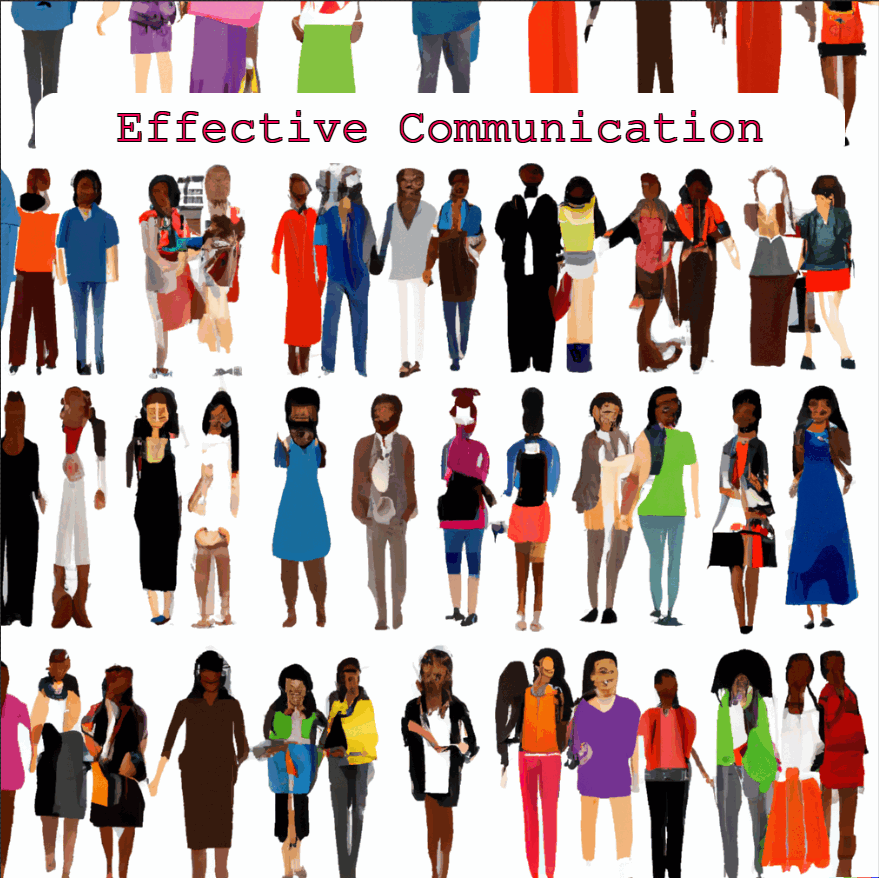A Translator’s job involves effective communication in order to deliver the message’s original intent and tone, considering cultural nuances, ensuring that the translated message is clear and easily understood by the intended audience. It takes into account the geographic and cultural disparities between the message’s original author or source and its target audience.
A professional language translator serves as a vital tool for effective communication in today’s globalized world. The most important rule as a professional translator is to effectively deliver the meaning of the message in every aspect. Both in personal and professional settings, the lack of oral interchange should not be a barrier to good communication because there is another means to do so: through translation. Throughout history, humans have relied on translation to advance knowledge, facilitate commerce, share information, and spread their beliefs.
What is Effective Communication?
Effective communication is the process of exchanging information, ideas, thoughts, and emotions clearly and accurately between two or more parties. Effective communication helps build relationships, resolve conflicts, and foster collaboration, ensuring that all parties are on the same page and working towards a common goal.
In the context of translation, effective communication involves considering cultural differences and other contexts, like educational, political or geographical contexts to ensure that the translated message is clear and easily understood by the intended audience. Depending on the type of translation job, active listening, clear verbal and non-verbal expression may be essential to understand the message.
Whether the translation is for personal use, for business, or international issues, an effective communicator attempts to enhance full communication through translation. Without verbal communication, the translator assumes the intent of the communicator by utilizing written words to explain the written content’s meaning to the target audience for the translated document. As you can see, there are many barriers to effective communication.

The Role of Effective Communication for a Language Translator
The role of a language translator in the context of communicating effectively si to close the gap between speakers of various languages and cultures. Language barriers still exist despite the fact that the globe is getting smaller owing to globalization, and people from various cultures prefer to converse in their own language. So, it is essential to use translation services in order for good communication to occur.
Comprehending the context of the source text to determine the author’s aim is key for the interpreter ti translate the author’s thoughts in other languages. If the translator cannot understand the meaning, the translation will be challenging. The translator also has to be aware of the connection between the material and the intended audience.
It is crucial for the translator to capture the correct tone of voice from the source materials. The accuracy of a translation depends on how well the translator is able to convey the conviction, passion, and nuance of the original text by carefully choosing the words and phrases to utilize in the language.
The translator must also be precise and clear while making sure that the terminology is acceptable for the intended audience. There are many effective communication techniques.
Translation impacts almost every element of life, business, and governance. The procedure is the most efficient approach for people from many cultures to communicate with one another.
How to master Effective and Efficient Communication Skills
Translation plays the key function of preserving the author’s original intent and facilitating better understanding across languages and cultures. Most times text may have facts and information with information not explicitly imprompted in the text. A language translator ensures the message’s quality and correctness.
By incorporating effective communication techniques into their work, translators can create high-quality translations that resonate with the target audience.
5 Techniques for Translators to improve in Effective Communication
Translation can accomplish Cross-cultural communication successfully if a translator is good at effective communication. Here are some key techniques for translator to become a more effective communicator:
- Continuous learning: Regularly update language skills and stay informed about the latest linguistic trends and industry-specific terminology. This will enhance the translator’s ability to accurately convey messages in the target language.
- Understanding cultural differences: Develop a deep understanding of the cultures associated with both the source and target languages. This will help you consider cultural nuances, idioms, and expressions, ensuring translations are contextually appropriate.
- Simplicity and precision: Strive for clear and concise phrases during translations, avoiding ambiguity and overly complex language. This will ensure that the intended message is easily understood by the target audience.
- Proofreading and editing: Meticulously review translated texts to identify and correct errors, ensuring high-quality translations. This step is crucial for maintaining effective communication and preserving the author’s original intent.
- Use of technology in your advance: Leverage translation tools, such as computer-assisted translation (CAT) software and terminology databases, and artificial intelligence applied to translatino to enhance efficiency and consistency in translations.
7 Translation Tips in an Effective Communication Context
To enhance your communication skills and ensure that your message is well-received, consider implementing the following translation tips to improve your effective communication strategies:
- Keep it genuine: In the context of effective communication, being genuine refers to expressing thoughts and ideas honestly and transparently. This helps to build trust and credibility with the audience.
- Be prompt and fast: Being prompt in communication means responding to messages, inquiries, or concerns in a timely manner. This shows respect for others’ time and contributes to the overall efficiency and professionalism of the communication process.
- Put consistency first: Consistency in effective communication involves maintaining a uniform tone, style, and vocabulary across all messages. This enhances the clarity and understanding of the content, ensuring that the intended message is effectively conveyed.
- Customize your message: Customizing your message in communication means tailoring the content and delivery to suit the specific needs, preferences, and cultural context of the target audience. This helps to create a stronger connection and resonance with the intended recipients.
- Strengthen it: Strengthening a message in communication involves using clear, concise language and emphasizing key points. This ensure that the intended meaning is effectively conveyed. This helps to keep the audience engaged and focused on the main ideas.
- Encourage comments: Encouraging comments in communication is about inviting feedback from others to gain valuable insights and identify areas for improvement. This promotes continuous learning and contributes to the overall effectiveness of the communication process.
- Motivate your managers: Motivating managers in the context of effective communication means fostering a supportive environment. This encourages skill development and continuous learning among team members.
This investment in training and development ultimately leads to better communication outcomes. Effective communication becomes helpful to convey information and ideas in a way that ensures the reader or the intended user understands the message.
What is Translational Communication?
Now that we know everything about effective communication, we must define Translational communication: The exchange of information between the author of the target text and the translator throughout the translation process. That is an essential step since failing to do so might result in major ramifications for the translation project.
If you are the text’s creator, you must make sure that everyone understands the message’s context. The translator will make changes to your content using his or her experience to make sure that the meaning and flow of the text are entirely retained.
We need to be conscious that the translator would perceive the text differently than the rest of us in order to properly comprehend the significance of communication in translation. Ordinary individuals would observe a text that has to be translated into another language, perhaps word for word.
A professional translator detects probable untranslatable terms, hours of effort it will take for the content to be translated, words and phrases that can be difficult. Understanding the context, the cultural setting, and making the most sense possible in the target language are all priorities.

Instant Translators vs. Human Translators
Nowadays, a job carried out by a human translator cannot be replicated by instant translators or online machine translators. It takes time to finish the intricate translation procedure. The translator should be fluent in the target language(s) and have a strong writing style. As translation does not frequently entail direct word-for-word substitution, the human translator considers the context of the textual information before transcribing it into the target language.
With the rise of Artificial Intelligence, nobody knows what will be possible in the future. However, although aided by AI, a translators job will always need to be supervised in order to achieve Effective Communication.
Although English is a practical language to use, enhancing written communication is necessary as more marketplaces open up. Nowadays, employing regional dialects and languages for communication is nearly the norm. People and organizations may connect with more people thanks to the Internet and contemporary communication technologies. The need for human translators rather than quick translators, however, is more critical due to linguistic variances.
Smart line USA is providing best communicator for you so that you may get benefit from our language translation services.
Contact TranslateDay for Top-Notch Language Services
Both delivering correct translation and being proficient communicators are important to us at Translation Services. To meet the objectives of the source content and the customer, we place emphasis on the target language, context, and tone of voice.
Our native-speaking translators, who reside in-country and possess linguistic and subject-matter experience, ensure that each translation project we manage will promote improved communication among speakers of different languages. Never hesitate to contact us if you want any type of inexpensive translation services.


